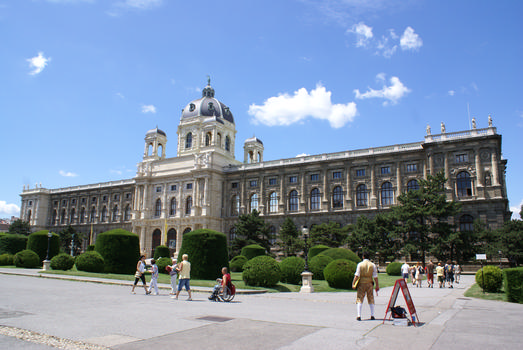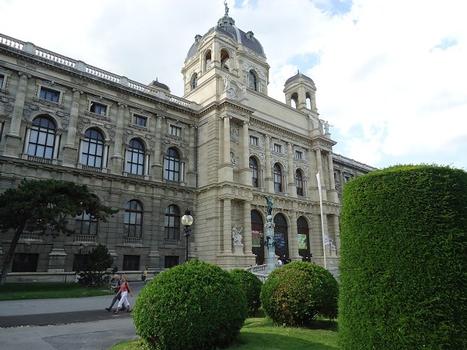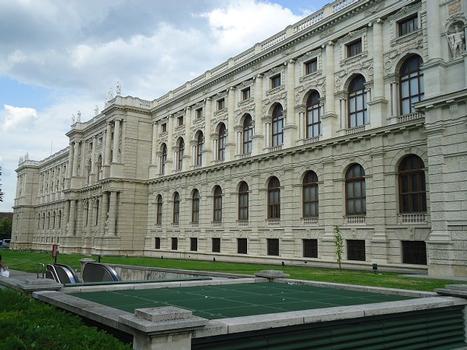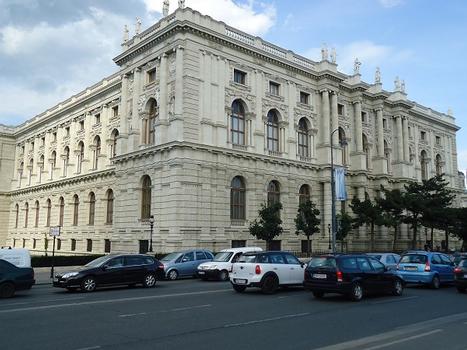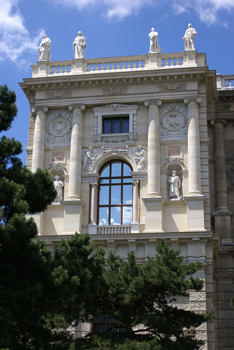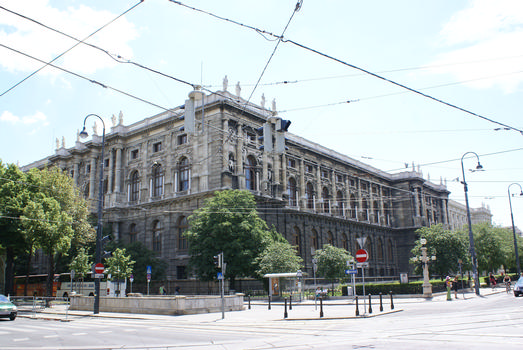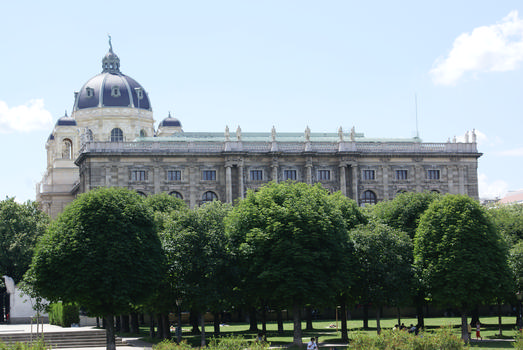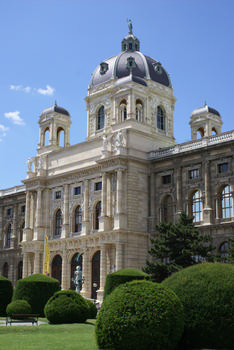General Information
| Name in local language: | Naturhistorisches Museum Wien |
|---|---|
| Beginning of works: | 1871 |
| Completion: | 10 1881 |
| Status: | in use |
Project Type
| Function / usage: |
Museum building |
|---|
Location
| Location: |
Vienna 1 (Innere Stadt), Vienna, Austria |
|---|---|
| Address: | Burgring 7 |
| See also: |
Museum of Art History (1881)
|
| Coordinates: | 48° 12' 20.69" N 16° 21' 37.98" E |
Technical Information
There currently is no technical data available.
Excerpt from Wikipedia
The Natural History Museum Vienna (German: Naturhistorisches Museum Wien) is a large natural history museum located in Vienna, Austria. It is one of the most important natural history museums worldwide.
The NHM Vienna is one of the largest museums and non-university research institutions in Austria and an important center of excellence for all matters relating to natural sciences. The museum's 39 exhibition rooms cover 8,460 square meters and present more than 100,000 objects. It is home to 30 million objects available to more than 60 scientists and numerous guest researchers who carry out basic research in a wide range of topics related to human sciences, earth sciences, and life sciences.
History
The history of the Natural History Museum Vienna is shaped by the passion for collecting of renowned monarchs, the endless thirst for knowledge of famous scientists, and the spirit of adventure of travelling researchers. True to the spirit of the inscription carved into the front of the museum, scientists at the NHM Vienna have over the centuries dedicated themselves and their work “to the realm of nature and its exploration”.
While in the 19th century this was expressed through major imperial research expeditions to little-known corners of the Earth, today it can be found in modern DNA analysis methods and meteorite research providing insights into unfamiliar worlds and the outer extremes of our cosmos.
The earliest collections of the Natural History Museum Vienna date back more than 250 years. It was Emperor Franz I Stephan of Lorraine, Maria Theresa’s husband, who in 1750 purchased what was at the time the world's largest and most famous collection of natural history objects from the Florentine scholar and scientist Jean de Baillou. This was the first step on the road to creating the Natural History Museum Vienna.
Baillou's collection comprised 30,000 objects, including rare fossils, snails, mussels, and corals, as well as valuable minerals and precious stones.
Franz I Stephan of Lorraine, who founded the Schönbrunn zoo in 1752 and the botanical garden in 1753, also organized the first scientific overseas expedition. In 1755 he commissioned Nicolaus Joseph Jacquin to travel to the Caribbean, the Antilles, Venezuela, and Colombia. Jacquin returned from this expedition with many live animals and plants for the zoo and the botanical garden, as well as 67 cases full of other items of interest from the natural world.
After the Emperor's death, Maria Theresa gave the natural science collection to the state and opened it up to the general public. Thus she created the first museum in line with the principles and visions of the Enlightenment.
It was Maria Theresa who brought the famous mineralogist Ignaz von Born to Vienna. Born, who had developed a new method of extracting precious metals, was tasked with classifying and expanding the collections. To this end he had minerals from many different regions sent to Vienna, where they were added to the collection. Under the leadership of Ignaz von Born the cabinet of natural history quickly developed into a center of practical research.
Text imported from Wikipedia article "Natural History Museum, Vienna" and modified on October 23, 2020 according to the CC-BY-SA 4.0 International license.
Participants
- Gottfried Semper (architect)
- Karl [Carl] Freiherr von Hasenauer (architect)
Relevant Web Sites
Relevant Publications
- : Wien - Der Architekturführer. Verlagshaus Braun, Berlin (Germany), pp. 83-84 [# 110].
- About this
data sheet - Structure-ID
20028550 - Published on:
20/06/2007 - Last updated on:
22/10/2020

